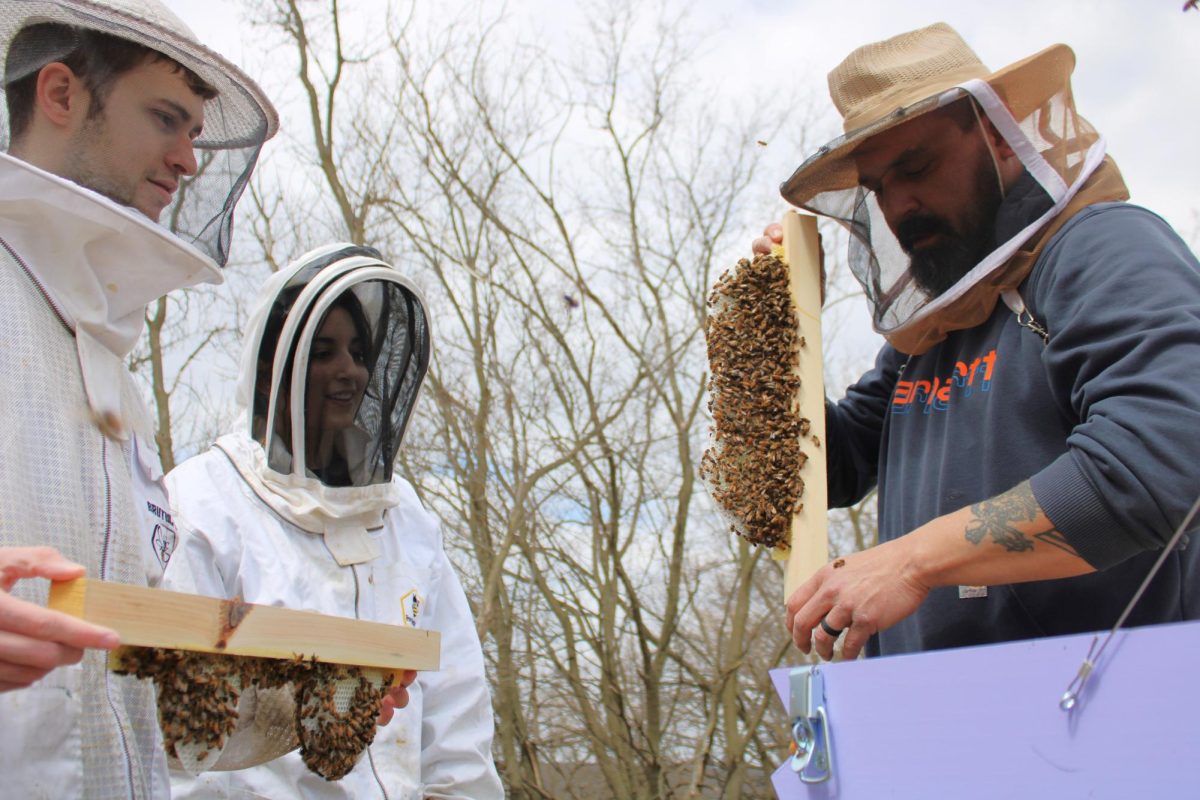Saving bees one hive at a time
Nearly 90% of wild plants and 75% of leading global crops depend on animal pollination, according to the World Wildlife Fund. In fact, one in every three bites of food is linked to honey bees.
With a lack of honey bee sanctuaries in the Midwest, and a bee population steadily declining, UW-Whitewater’s Beekeeping Club was born.
The bee mortality rate in Wisconsin is around 70%, according to president Samuel Ramirez Fercano.
“There is a new disease impacting bees where they don’t know what’s causing it,” Fercano said.
Fercano has been a beekeeper for 10 years and was an original member of the club when it was resurrected a few years ago, then was later elected president.
Currently, the club maintains multiple hives on campus. They also hold events throughout the year to raise money for the club and increase awareness.
Honey sales and candle making with beeswax are some of the more popular activities hosted by the club, according to Fercano.
“There really is a stigma around bees,” head beekeeper Daniel Ranson said.
Most people agree on the importance of pollination, but when bees enter the conversation, fear takes over.
“No one wants to get stung, but bees are only aggressive if provoked,” Ranson said.
The beekeeping club’s mission is not only to protect bee health, but to educate the community.
The club hopes to continue expanding the hives and eventually become self-sustaining, according to Ranson. The main goal is to set up a larger apiary, or bee yard, on campus with a research center.
“We want to start an agriculture class where anyone can come out, handle the bees and learn about them,” vice president Jacob Kostinek said. “Bees are tiny creatures, but the backbone that quietly supports life on the Earth everyday.”
To keep up to date with Beekeeping Club, or to get involved, visit their Instagram @uwwbeekeeping.

Gallery • 5 Photos
Jacob Colvin
From right to left, Daniel Ranson, Erik Gilbertson (Finance major), and Hannah Mirza (Business integrated science major) investigate the top bar hives to check on progress, April 11, 2025.

댓글
댓글 쓰기